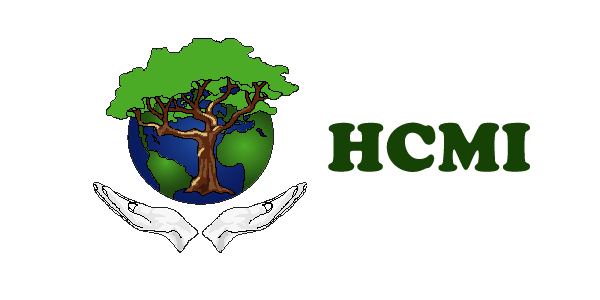Testicle Support Remedy
 In mammals, the testes (testicles for plural) are often contained within an extension of the abdomen called the scrotum. In mammals with external testes it is most common for one testicle to hang lower than the other. While the size of the testicle varies, it is estimated that 21.9% of men have their higher testicle being their left, while 27.3% of men have reported to have equally positioned testicles. This is due to differences in the vascular anatomical structure on the right and left sides. The average testicle size, after puberty, measures up to 2 inches long, 0.8 inches in width, and 1.2 inches in height.
In mammals, the testes (testicles for plural) are often contained within an extension of the abdomen called the scrotum. In mammals with external testes it is most common for one testicle to hang lower than the other. While the size of the testicle varies, it is estimated that 21.9% of men have their higher testicle being their left, while 27.3% of men have reported to have equally positioned testicles. This is due to differences in the vascular anatomical structure on the right and left sides. The average testicle size, after puberty, measures up to 2 inches long, 0.8 inches in width, and 1.2 inches in height.
The cremasteric muscle is part of the spermatic cord. When this muscle contracts, the cord is shortened and the testicle is moved closer up toward the body, which provides slightly more warmth to maintain optimal testicular temperature. When cooling is required, the cremasteric muscle relaxes and the testicle is lowered away from the warm body and is able to cool. This phenomenon is known as the cremasteric reflex.
The primary functions of the testes are to produce sperm (spermatogenesis) and to produce androgens (sex hormones), primarily testosterone. Both functions of the testicle are influenced by gonadotropic hormones produced by the anterior pituitary. Luteinizing hormone (LH) results in testosterone release. The presence of both testosterone and follicle-stimulating hormone (FSH) is needed to support spermatogenesis. So if you are having problems with infertility, you may need the Pituitary Support remedy in addition to this one.
Fun Facts
- Human testicles are smaller than chimpanzee testicles but larger than gorilla testicles.
- Testicles begin to form around week 4 of embryonic development. They form adjacent to the kidneys and work their way down the "path of descent" and generally drop into the scrotum by birth.
- To "testify" was based on men in the Roman court swearing to a statement made by swearing on their testicles.
- Never wear underwear or clothes that are tight as it can cause your testicles to overheat or become swollen, affecting sperm production and possibly even causing pain.
- Testosterone is not the cause of erections, but it gives you the desire to obtain one.
Health Conditions
- Trauma to the testes can cause severe pain, bruising and/or swelling. In most cases, the testes-which are made of a spongy material-can absorb the shock of an injury without serious damage. A rare type of testicular trauma, called testicular rupture, occurs when the testicle receives a direct blow or is squeezed against the hard surface of the pelvis. This injury can cause blood to leak into the scrotum. In severe cases, surgery to repair the rupture-and thus save the testicle-may be necessary.
- Testicular torsion: Within the scrotum, the testicles are secured at one end by a structure called the spermatic cord. Sometimes, this cord gets twisted cutting off the testicle's blood supply. Symptoms of testicular torsion include sudden and severe pain, enlargement of the affected testicle, tenderness, and swelling. This disorder, which occurs most often in young males between the ages of 12 and 18, can result from an injury to the testicles or from strenuous activity. It also can occur for no apparent reason. Testicular torsion is an emergency. Testicular function may be saved if the condition is diagnosed and corrected immediately. If the blood supply to the testicle is cut off for a long period of time, the testicle can become permanently damaged and may need to be removed.
- Testicular cancer occurs when abnormal cells in the testicles divide and grow uncontrolled. Symptoms of testicular cancer include a lump, irregularity or enlargement in either testicle; a pulling sensation or feeling of unusual heaviness in the scrotum; a dull ache in the groin or lower abdomen; and pain or discomfort (which may come and go) in a testicle or the scrotum. Testicular cancer is a rare form of cancer and is usually curable.
- Epididymitis is inflammation of the epididymis, the coiled tube that lies on and behind each testicle. It functions in the transport, storage and maturation of sperm cells that are produced in the testicles. Epididymitis often is caused by infection or by the sexually transmitted disease chlamydia. Symptoms of epididymitis are scrotal pain and swelling. In severe cases, the infection can spread to the adjacent testicle, causing fever and abscess (collection of pus). If left untreated, epididymitis can produce scar tissue which can block the sperm from leaving the testicle. This can cause problems with fertility.
- Hypogonadism in men is a disorder that occurs when the testicles (gonads) do not produce enough testosterone. Primary hypogonadism occurs when there is a problem or abnormality in the testicles themselves. Secondary hypogonadism occurs when there is a problem with the pituitary gland in the brain, which sends chemical messages to the testicles to produce testosterone.
Suggestions To Strengthen
- Eat less fat, it inhibits testosterone.
- Exercise regularly, it helps keep androgens in balance.
- Keep the thyroid and pituitary healthy.
- Don't over stimulate the mind with sexual books, shows, etc.
- Work on self worth, conquer feelings of inadequacy.
Complete support remedy for Male Testes and related functions
Complete support remedy for Gallbladder and related functions
Complete support remedy for Brain and related functions
Provides support and healing for conditions of the large intestine

